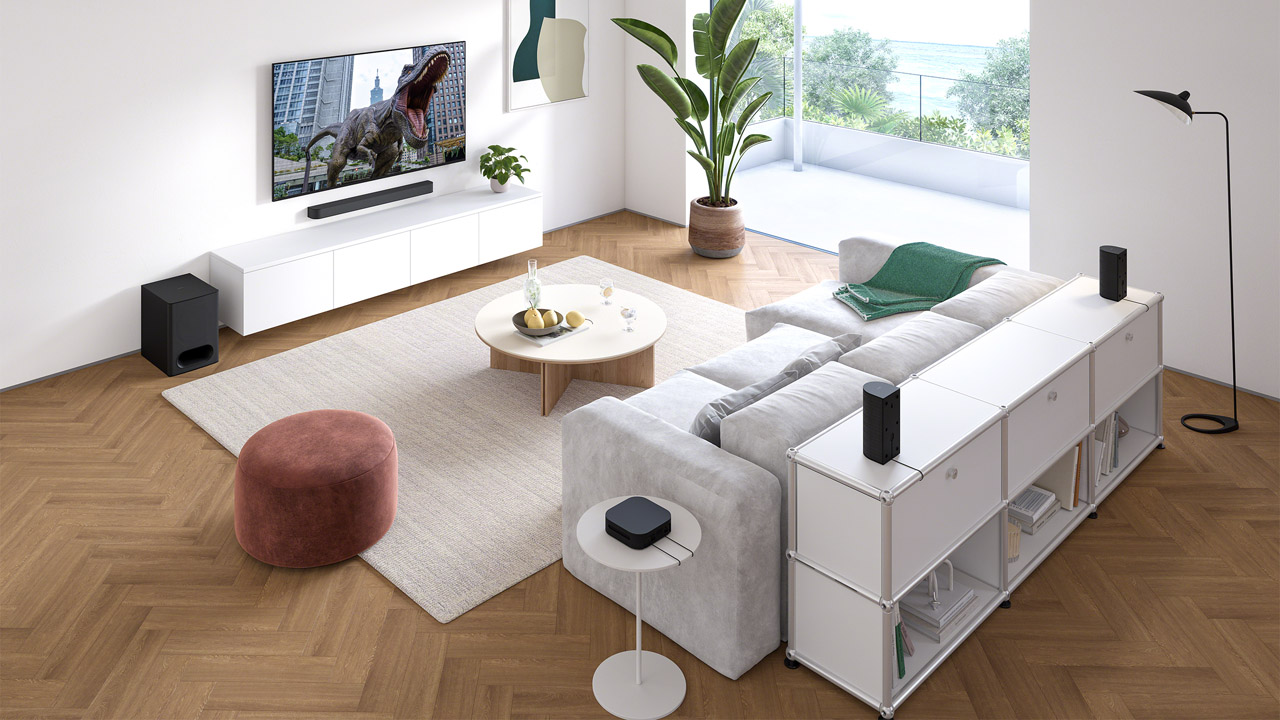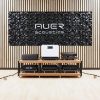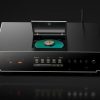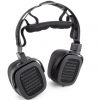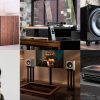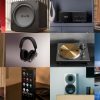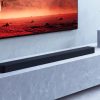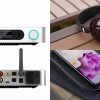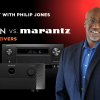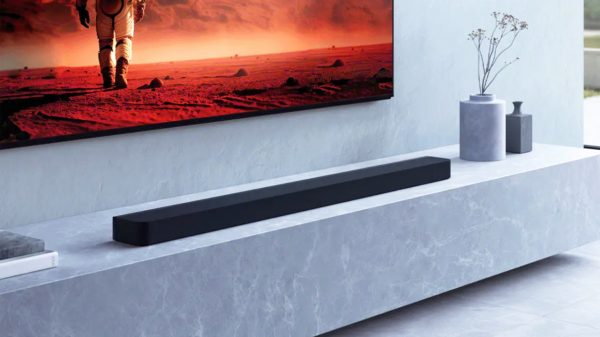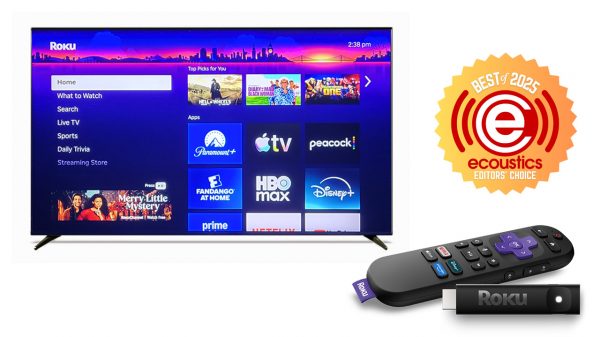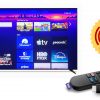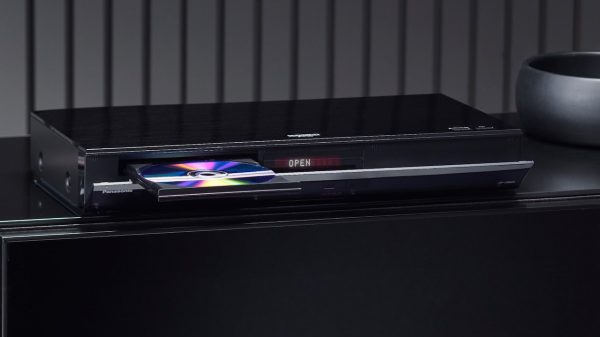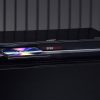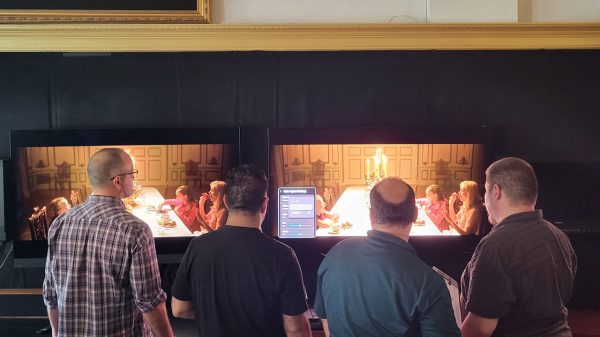In 2024, Sony expanded their BRAVIA brand from TVs to soundbars, speaker systems and projectors. The company launched two high-end Dolby Atmos-capable soundbar systems (BRAVIA Theater Bar 8 and Bar 9) as well as the flagship BRAVIA Theater Quad home theater speaker system. Earlier this spring, the company filled out the BRAVIA soundbar line with a budget-priced standalone soundbar with virtual Dolby Atmos support, the BRAVIA Theater Bar 6 and a new entry-level packaged speaker system, the BRAVIA Theater System 6, the subject of this review.
What Is It?
The BRAVIA Theater System 6 (Model HT-A60) includes a soundbar, powered subwoofer and rear speakers for a fully discrete 5.1-channel surround sound system. Through the use of virtualization technology, the System 6 can support both Dolby Atmos and DTS:X sources via virtualized height channels. This gives the listener the experience of sound coming from above, without the need for discrete in-ceiling speakers or upward-firing reflective height channel speakers. At least in theory.
Who is it For?
At $769.99 (MSRP), it’s a bit pricier than most entry level soundbar-based surround sound systems, but it does offer discrete rear speakers which help provide an immersive surround sound experience. With everything that you need included in the box (even an HDMI cable) and wireless connectivity, the BRAVIA Theater System 6 is targeted at those looking for a simple solution to improve the sound of their TV watching and music listening without spending a lot of money or having to run wires all around the room.
In addition to the HDMI ARC/eARC port, which most TVs support these days, the System 6 also includes a fiberoptic digital audio input, a 2.5mm stereo analog Aux input and Bluetooth wireless connectivity. Switching inputs can be done on the app or on the included remote control. The System 6 does not support WiFi or ethernet networking so you won’t find any streaming features on the bar itself and any updates will need to be done using the USB input on the back of the subwoofer.
While the BRAVIA Theater Bar 8, Bar 9 and Quad system allow you to use a compatible Sony TV’s built-in speaker as the center channel, the System 6 does not offer this feature. However, Sony’s AI-based “Voice Zoom” feature on select Sony TVs is compatible with the BRAVIA Theater System 6. This can be effective at raising just the dialog without affecting other sounds.
The Set-Up
The BRAVIA Theater System 6 is not your typical “wireless” soundbar-based speaker system. In most of these products, the soundbar is the brains of the operation. It has the inputs and outputs, built in surround sound decoding, amplification and switching capabilities, and perhaps an LED display. Those types of soundbars connect to a TV via an HDMI cable and then communicate wirelessly to a powered subwoofer and (normally) a pair of rear speakers in order to create room-filling sound.

With the BRAVIA Theater System 6, it’s actually the subwoofer that has the inputs and outputs as well as amplifiers for both the subwoofer itself and all the speakers in the soundbar. This presents the first challenge: because the included HDMI cable is only about 5 feet long, your placement of the subwoofer is going to be a bit limited. Also, because the IR remote control sensor is in the subwoofer (instead of the soundbar), you’ll need to make sure the subwoofer is placed within visible line of sight to your couch or other seating. You can’t just tuck it away unless you want to rely on your TV remote (or the Sony mobile app) to take care of the control duties.
Using the included 5-foot HDMI cable, the System 6 subwoofer will need to be fairly close to your TV’s HDMI ARC/eARC port. So if that port is on the left side of your TV, then that’s where the subwoofer will need to go. The subwoofer has a proprietary speaker output (cable included) which connects to the soundbar. That cable is around 10 feet long. Of course, you can just provide your own (longer) HDMI cable and put the subwoofer somewhere else, but it will still need to be within 10 feet of the soundbar in order to connect to it. I opted to use a longer HDMI cable so I could place the subwoofer along the front wall to the right side of the TV and equipment stand.
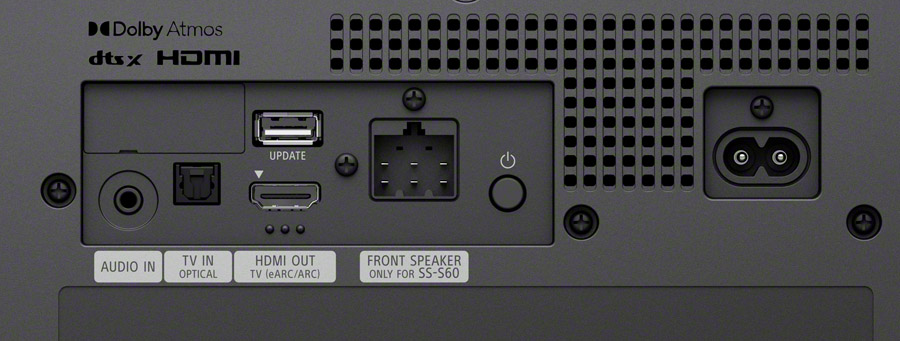
Similarly, the rear channel speakers are passive (like the soundbar) and each include a 17-foot attached cable ending in a proprietary terminal which connects to a rear channel wireless amplifier module. That rear amplifier can be placed anywhere near the back of your room and pairs to the powered subwoofer module wirelessly. The benefit of this approach is you only need one power plug for the rear speakers. The drawback is that you’ll need to run wires between the wireless amplifier and the rear channel speakers. With all that said, the actual set-up wasn’t too complicated.
When unboxing the system, I appreciated the use of mostly paper and paper-based packaging rather than plastic. There weren’t even any plastic cable ties around the included cables. I unpacked all the components, plugged my HDMI cable between the TV’s HDMI eARC port and the subwoofer’s HDMI eARC port, plugged the subwoofer into wall power and connected the subwoofer’s speaker cable output to the soundbar’s one and only HDMI input.
For rear channel duties, I plugged the rear wireless amplifier into wall power and connected that to the two rear speakers which were placed behind the couch, each around four feet from the main listening position. Both rear speakers and the soundbar feature simple keyhole-style mounting options so you can mount them on the wall using standard screws or mounting hooks.

To complete the set-up, I had to download Sony’s BRAVIA Connect app to my phone. A QR code is included in the box for this, or you can just search your app store for BRAVIA Connect.
Once the BRAVIA Connect app is loaded, you’ll need to add the system as a new device in the app, and the app will play some test tones to verify the connection. The next step was to pair the system to the rear amplifier module, but this failed. I hit the “Link” button on the back of the wireless module a few times until the app finally found the amp and paired it to the system.
Once the amp was paired, the system generated a test tone for the rear left speaker which actually came out of the soundbar at first. I repeated the test and the sound properly came from the left rear speaker. The same procedure for the rear right speaker didn’t go as well. Generating that test tone for the rear right speaker resulted in the test tone coming from the soundbar 5 or 6 times. I closed the app and restarted it and eventually the tone did start coming out of the right rear speaker as expected. This was odd behavior that didn’t instill much confidence.
I verified that sound from the TV was coming from the system and that both the TV remote and the included Sony soundbar remote could control the volume. Controlling the volume and adjusting settings from from the BRAVIA Connect app was hit or miss. There were sometimes delays in responding to settings such as volume and rear speaker and subwoofer levels. And when changing the soundfield, the change did not always reflect in the app even though I could hear the difference. I found myself restarting the app several times over the course of the review in order to work around these issues.
Tip: Be sure that your TV is set to use the HDMI eARC port or “external speakers” in its audio settings menu. This isn’t always enabled by default and it is required to use an eARC receiver or soundbar.
As many words as have been dedicated to this, the fact is that the full unpacking and set-up process took maybe 30-40 minutes tops. And if you already have the BRAVIA Connect app installed, it will probably be even quicker.

Tweaks and Measurements
The BRAVIA Connect app includes a number of different adjustments and options including level adjustments for the rear channel speakers and the subwoofer/bass output. To get an idea of what I had to work with, I whipped out my trusty Dolby Atmos test disc, the Spatial Audio Toolkit, by YouTubers Techno Dad and Joe ‘n Tell, along with an old-school Radio Shack SPL meter. Across the board, the main channels (front left, front right, center, rear left and rear right) were pretty close in levels, within a decibel or two of each other. But the subwoofer was at least 5 dB higher than the rest and the “virtual” height channels were down about 3 dB from the rest.

The BRAVIA Connect app allows you to adjust rear speaker levels and subwoofer levels, so I reduced the rear channels to -2 and reduced the subwoofer level to -3 in order to get the most natural and balanced sound mix to my ears. But there is no way to adjust the virtual height channel levels so height effects were not too prominent in the overall immersive soundstage.
The System 6 remote and app include a “Night Mode” for reduced dynamic range as well as a “Voice Mode” in case you need to boost the dialog a bit. There’s also a “Sound Field” button to engage the virtual immersive surround sound. You can choose Sony’s Vertical Surround Engine, Dolby Speaker Virtualizer or DTS Virtual:X.
Sony states that regardless of which of these sound fields you choose, Dolby Virtualizer will still be active on Dolby encoded content and DTS Virtual:X will be engaged on any DTS content. I noticed that selecting “Dolby Speaker Virtualizer” as the soundfield resulted in a huge increase in volume, but not necessarily better sound. I left the soundfield setting set to Sony’s “Vertical Surround Engine” for most of my listening and recommend you do the same.
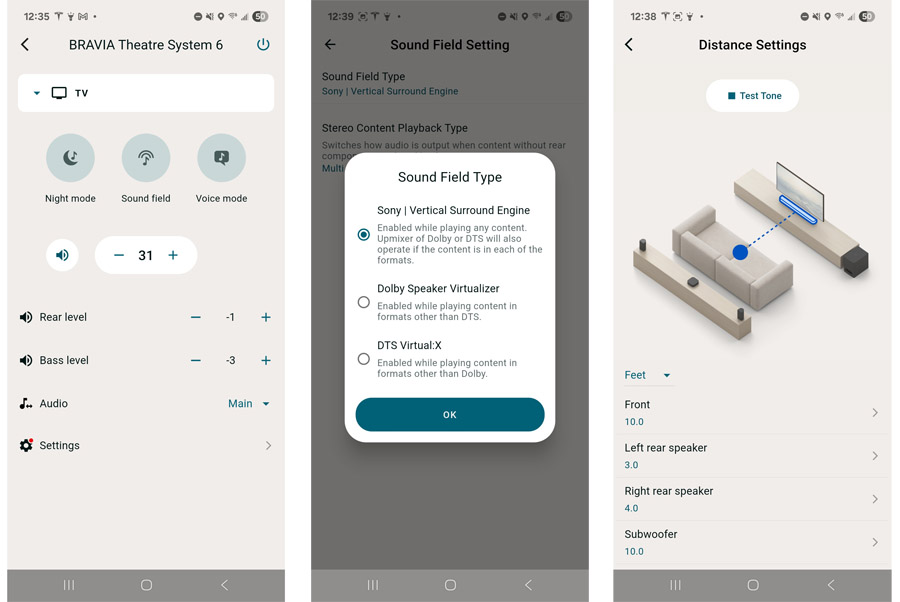
Listening Notes
Over the course of several weeks, I used the BRAVIA Theatre System 6 both for movie watching and music listening. I confirmed that the system could decode both DTS:X and Dolby Atmos content, as well as Dolby Digital, DTS Digital Surround and PCM 2-channel and 5.1-channel streams. The surround sound format being received by the System 6 is displayed in the BRAVIA Connect app.

Generally speaking, in the bass department, the subwoofer did provide a solid foundation for movies and music, but didn’t extend into the lowest octaves and could be a bit boomy around the 100-200 Hz region. This reduced the overall intelligibility and clarity of the sound. In the app, you can reduce the subwoofer level, but this takes away some of the oomph. It’s possible I could have gotten better results by experimenting with subwoofer placement but the dongle cable between subwoofer and soundbar limited placement options a bit.
Overall spaciousness of the sound was very good with virtualization helping to extend the height of the soundstage and the rear channel speakers providing a solid rear image. But the front and rear speakers didn’t match each other’s timbre, which made for less than perfect results when objects moved around the room.
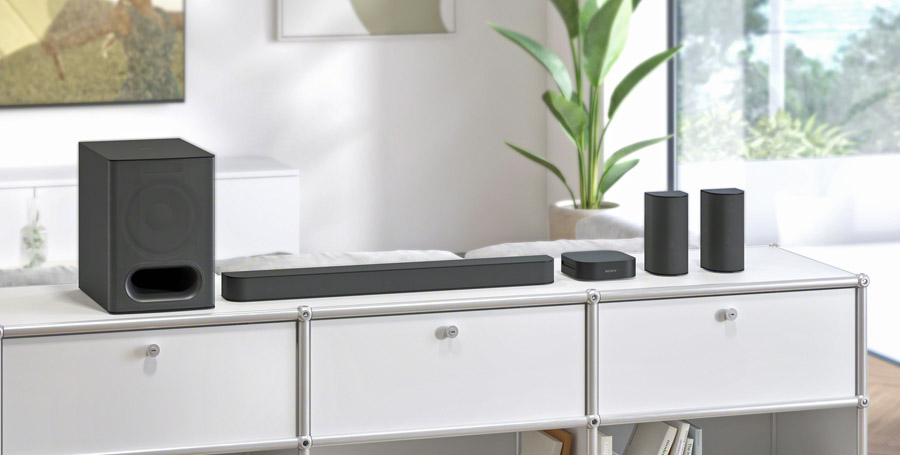
For testing immersiveness, I put on a few Dolby Atmos clips. On the opening scene of the first episode of “Andor,” rain, which is supposed to come from overhead, sounded like it was coming from slightly above the front speakers. The virtualization effect does give a hint of that immersive dome of sound we hear with discrete height channels, but it didn’t quite match the realism of the up-firing drivers we find in (generally more expensive) systems from Sony and other brands, like the BRAVIA Theater Quad or LG S95TR.
The intro of “Blade Runner: 2049” uses Dolby Atmos quite effectively at establishing a sense of space in the approach to a potential Nexus 8 replicant’s home. This was represented well on the System 6 with the otherworldly soundtrack blending with the swirling fog and sand while the drone captured the scene from above.
Turning to a more complex Dolby Atmos passage, in the worm attack on the mining crawler in Denis Villeneuve’s “Dune,” (time code 1:06:21), the System 6 did keep the jumble of swirling sand, music, effects, and Bene Gesserit voices reasonably coherent, but it was not easy to make out any of the words being spoken. Invoking Voice Mode boosted the voices but made the music and other sound effects take a back seat, which lessened the overall impact of the scene.
Switching over to multi-track music, I queued up several of my favorite Dolby Atmos music tracks including Ed Sheeran’s “Shape of You,” A-Ha “Take on Me” and Billie Eilish “30th” which all sounded expansive and dynamic through the System 6. The new Dolby Atmos mixes of Roxy Music’s “Avalon” and “More Than This” by engineer extraordinaire Bob Clearmountain sounded particularly ethereal on the System 6. But a few tracks displayed the shortcomings of the system.
On the EDM cut “Alive,” by KX5/Deadmau5, there’s a snare drum roll about 4 minutes in that starts in the front center and is supposed to move in a circular fashion counter-clockwise around the room. On the System 6, the representation of this motion had some gaps between front and rear and wasn’t as wide in the front as I would have liked. Also, the timbre differences between the soundbar and the rear speakers made that snare drum’s sound change in tone as it moved around the room.
In the Dolby Atmos version of Aoife O’Donovan and Allison Russell’s “Prodigal Daughter,” the bass was a bit too forward and tubby, muddying details in the lower midrange. And, while the vocals were clear and fairly articulate, details like the finger-picking on the guitars were lost in the mix.
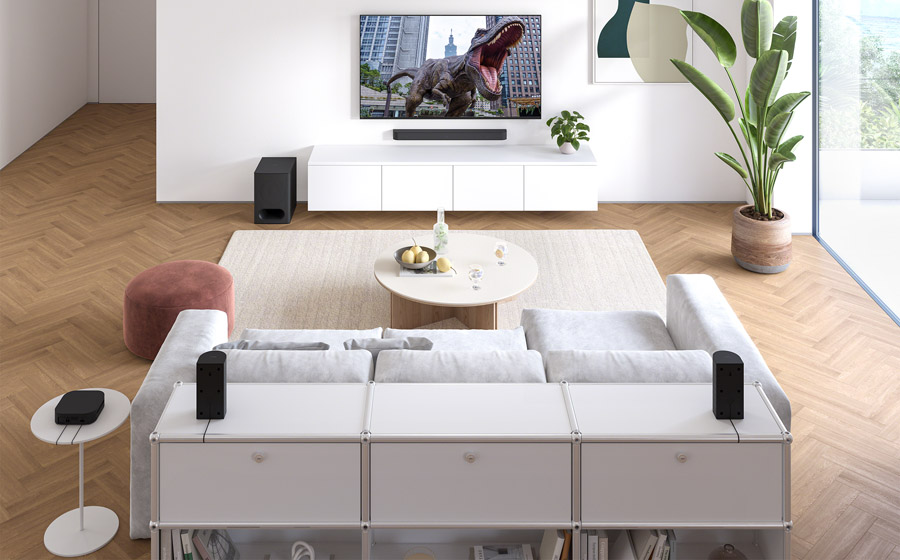
When listening to stereo music, you can choose between upconverting that sound to matrixed surround (Upmix”) or using a “Multi Stereo” mode which sends the same signal to the rear speakers as it does to the front left and right speakers. Multi stereo is good for casual music listening or for a party. The upconverted surround option fills out the spaciousness a bit but obviously won’t be as immersive as true 5.1, Dolby Atmos or DTS:X content.
The Bottom Line
The BRAVIA Theater System 6 can provide a significant improvement to TV sound. Its rear channel speakers provide a much more immersive surround sound experience than soundbar systems that rely entirely on virtualization to try to simulate rear surround. If you have an oddly shaped room or very high or angled ceilings which don’t support up-firing reflective drivers, then these virtual height channels are a nice alternative, but they won’t compare with actual height speakers for height effects. And its current price point puts it higher in price than some competitive discrete 5.1.4-channel system with up-firing drivers.
Pros:
- Real rear channel speakers provide discrete 5.1-channel surround sound
- Wireless connectivity eliminates the need to run wires from the front to the back of your room
- BRAVIA Connect app allows for system optimization and tweaks
Cons:
- Complicated in-app settings can be a bit confusing
- Limited placement opportunities with all inputs on subwoofer and proprietary hard-wired connection between subwoofer and soundbar
- Some idiosyncrasies and unreliability in BRAVIA Connect App
- Virtualized height channels not as effective as discrete up-firing height drivers
- A bit expensive for its performance and feature set
Where to Buy (click for current pricing):
Related Reading:

